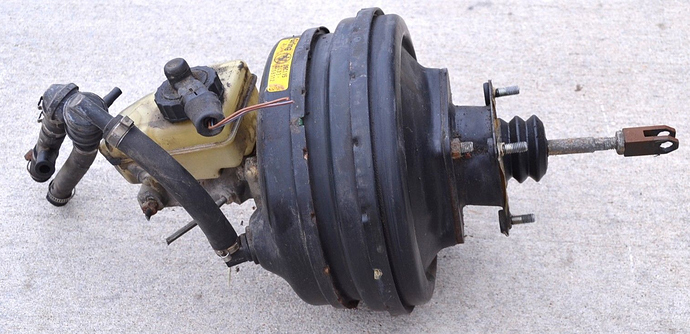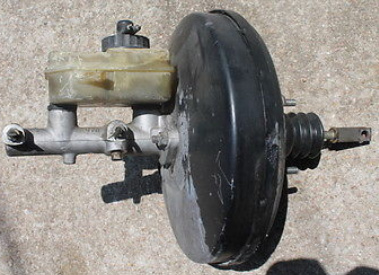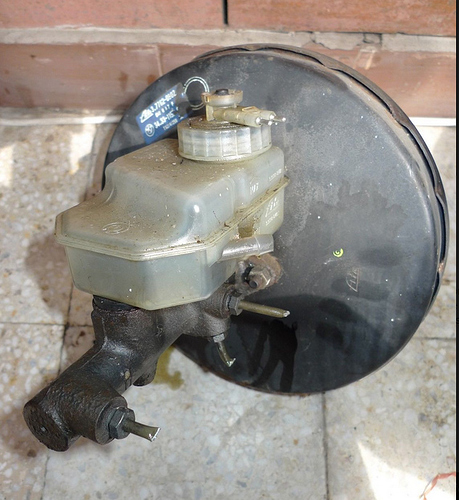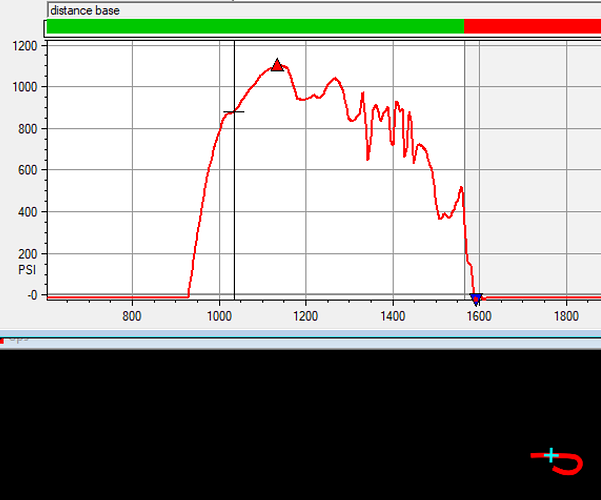I’m going to try to write a post which will explain brake bias. Well, at least it will try to. I’ve got some book-learning under my belt, but I’ve never been anywhere near the design side of brake systems.
There’s 4 elements that contribute to our brake bias.
-
The brake bias valve. The curve of front brake hydraulic pressure to rear has a “knee” at about 355psi. See pic below. The knee is caused by the bias valve. At pressures below 355psi, both front and rear slaves get the same pressure. But above that, the rear only gets about 2/3rd the pressure of the front brakes, call it 66%.
-
The rear slave is about 1/3rd smaller than front. Smaller piston means smaller surface for hydraulic pressure to put against so less force pushing pad against rotor. So 66% drops to 44%.
-
Rear rotor is smaller diameter therefore pad has smaller lever arm to act on wheel. Not sure how much smaller, call it 10%. So now we’re at 40%.
-
Rear pad is smaller than front pad. Not sure how much smaller, call it 10%. So now we’re in the ballpark of 36%. Note that there is some debate about this. Theoretically friction is independent of surface area, but in practice that’s not really true. So I would argue that the surface area bias remains a fair point.
The sum of that is brake pedal pressure results in rear tires only getting about 36% of the braking force of the front tires. Our rear brakes don’t do much stopping. I’d argue that mostly what they do is just keep the rear end from coming around.
Video showing the brake bias valve at work. Bottom line: The video perfectly shows the action of the brake bias valve. You can see the front/rear pressures climb up to about 300, then the front starts climbing faster than the rear.
Details. In 2015 I managed to convince myself that I had a braking problem. It was some braking problems at Sebring that drove this. My stopping distances just seemed way too long. So I put together a hydraulic pressure test rig.
This effort was much harder than I thought it would be. I had to work thru a lot of problems with hoses and fittings, and I had to have a means to bleed the hoses that the gauges were on. All of this took weeks of figuring out what the problem was and then figuring out a solution. But once I had everything working, I could put the test rig into any place in the hydraulic system and test the pressure at that point.
For several weeks I connected up to every place in the brake hydraulics, trying several MC’s, bias valves, and 4 different ABS unit. It took a lot of repetitive testing before I could be pretty sure that what the gauges were telling me was “real” as opposed to something was still screwed up with my testing and I was getting BS #'s.
For prob 6 wks I was up to my elbows in brake fluid almost every night. Every time I did anything I had to bleed the whole system so I got pretty efficient at it.
The video shows the front pressure hitting a peak of about 700psi and then not going higher. The rear pressure continues to build. That totally fit what was happening to me at Sebring so I felt vindicated. But with all of the swapping around, the behavior went away and I was never able to duplicate it. No combo of MC, bias valve, and ABS pump would bring back the Sebring behavior. So I never really figured out what the cause of the problem was.
I tried hard to reproduce the problem in the video and at Sebring in order to ID the component that was causing the reduced brake pressure to the front. But try as I might, I could not reproduce the symptom. I couldn’t get my shit to fail. That forced me to ask the hard question…“just how sure am I that there ever was a real problem?” So by then I was so full of second guessing myself that I just said “screw it. It’s working now and I’m tired of being soaked in brake fluid”.



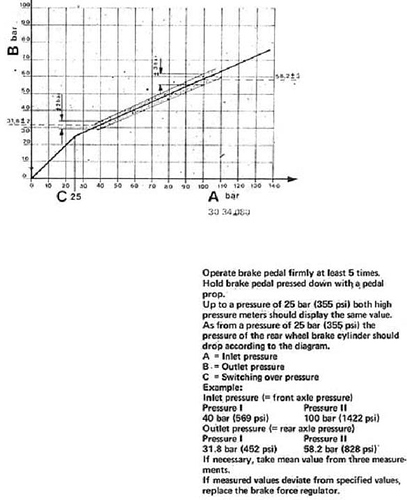
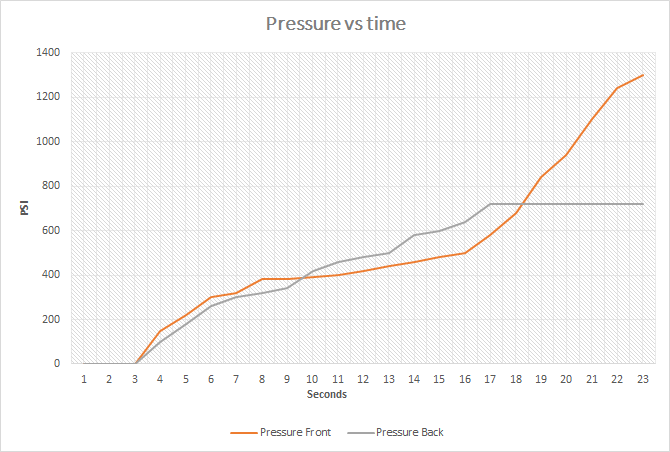
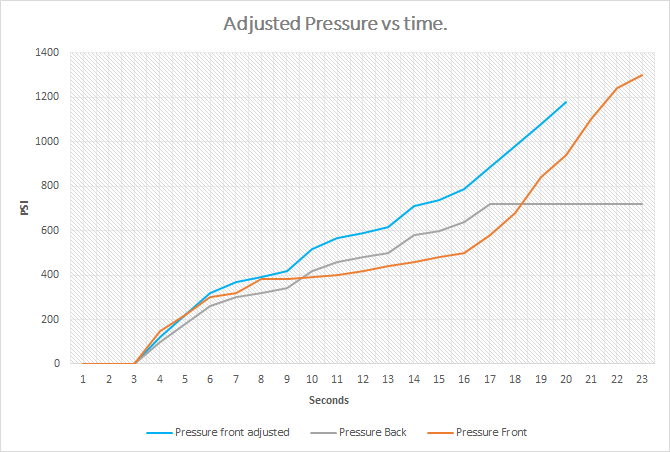
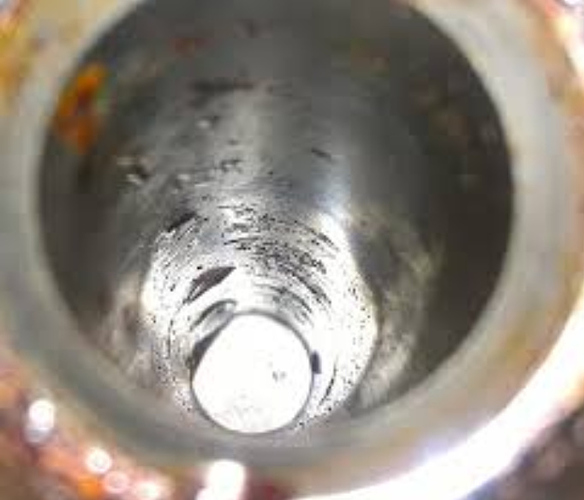
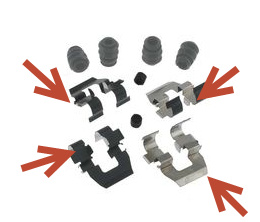 My 240sx 1989, has girling style calipers(no abs), and the brake feel is 100% better.
My 240sx 1989, has girling style calipers(no abs), and the brake feel is 100% better.